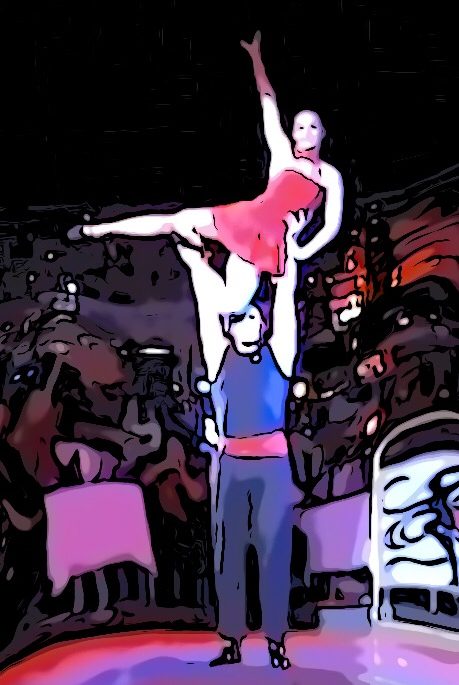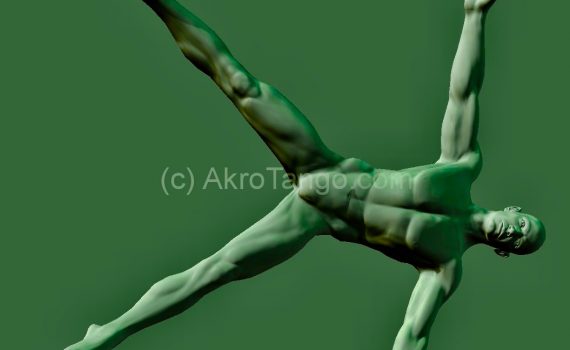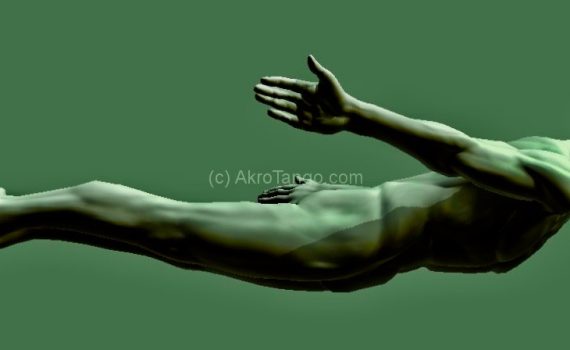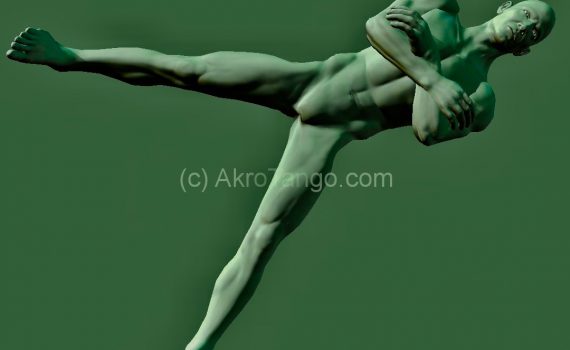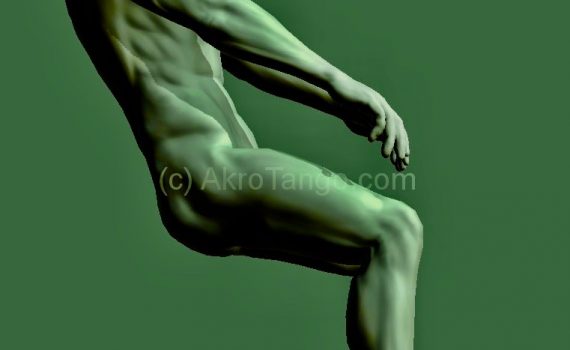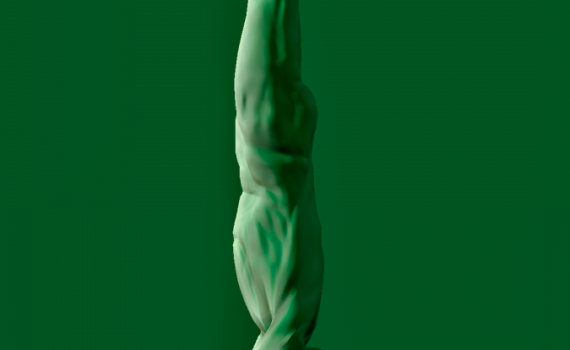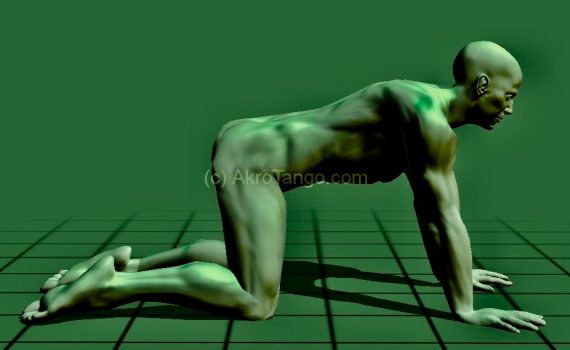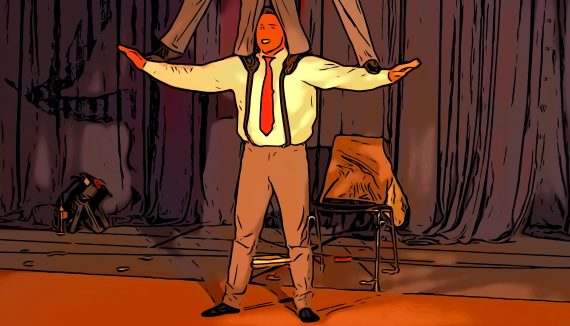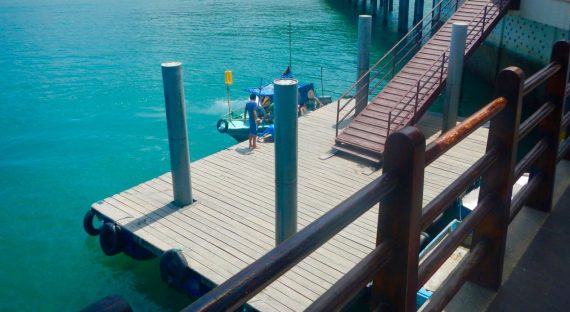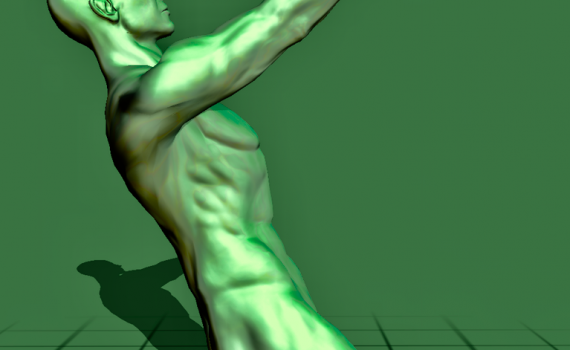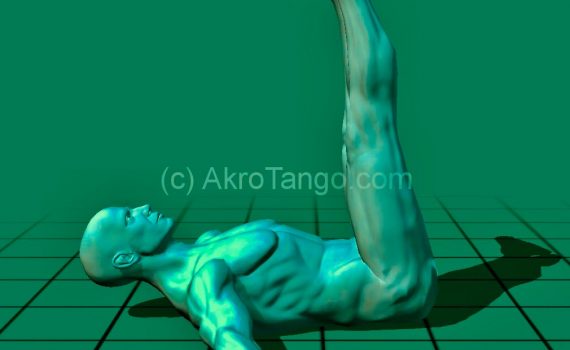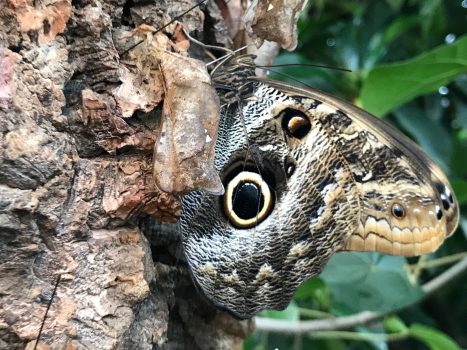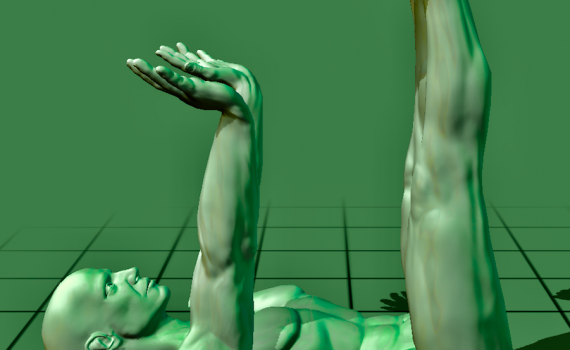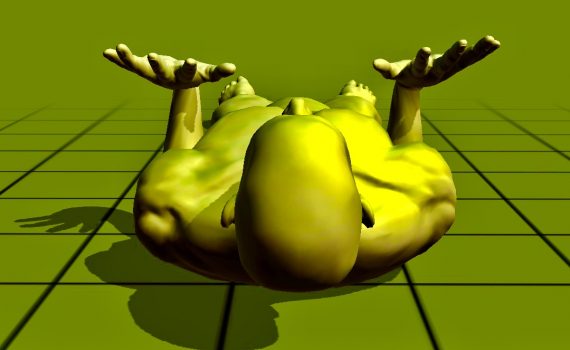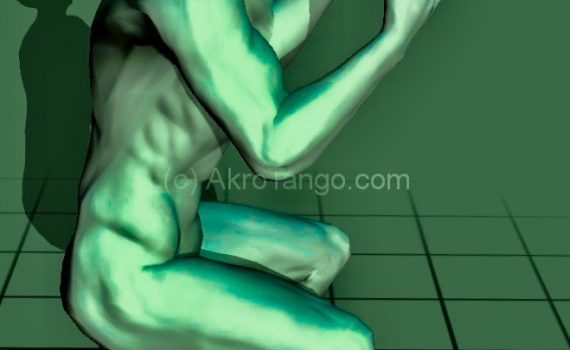This position is usually supported with the hand, thus it usually has 2 contact points. It is a popular, because audience-effective position, which can be learned with little effort. Analogous to the previous names, I call them side-flyer. However, she is also known by other names, such as swallow, high star, … just to name a few. The contact point of the base is always at the hip of the flyer below its center of gravity. In the supported side-flyer, the contact point of the base, the contact point of the flyer and the flyer’s shoulder form a triangle. The […]
Kategorie: green
In the belly flyer, the flyer tends to shorten the back. This is an attractive position as it allows the flyer to raise his head and thus to present himself to the audience. For the transition to other positions this position is rather unfavorable (for example to the shoulder-stand or side-flyer). A pressed out belly makes contact with the hip difficult and, in the bad case, can lead to slipping. If the belly flier is not presented, then the flyer should take a position as if it were lying on the ground. His chin is on the floor and feet […]
A flag is a form of Libra in which the flyer will be at 2 contact points balanced (with pulling and pressure point). These contact points form a triangle to each other, in which the upper body of the flyer hangs sideways. Giving the impression of a living flag. The flyer absolutely extends both knees and keeps the upper foot (= pulling point) strongly tightened. Again, the base creates the balance and the flyer has to trust him. The base takes care in the balance that the flag does not unintentionally shifts away sideways. He is managing it with the upper […]
The chair is a simple form of Libra. The flyer stands frontal to the base on his thighs and will be balanced at 1 or 2 hands by pulling. Contact point are either the hands or knees of the flyer. To balance, the base uses only his own knees; the arms stay stretched. By pushing his knees far under the flyer, he can achieve an even free balance (→ facing). The flyer remains in the line of force without shearing the knees of the base. This position is very well suited as a first balance exercise for beginners. Additional stability […]
The base can balance the flyer only with stable (fixed) shoulders. To balance the flyer, the base creates at the shoulder of the flyer the necessary shear forces, without these should get changed. For the flyer this means: Position 1: either pulling the shoulders in the direction of the hip … Position 2: or pulling towards his ears … Common to both variants is that the center of gravity of the flyer remains exactly above the shoulder. Mostly, the flyer supports himself with its hands on the forearms of the base to stabilize himself. However, this must not cause him […]
The bank position (hip width knee position) forms a secure pedestal, because the distance to the ground is low (body center of gravity is deep) and a large support surface is available. The back is straight, arms and thighs are pointing almost vertically downwards. However, the shoulder should never come in front of the palm. The flyer should only load the base within the hip and/or shoulder area, because there the spine arched outwards and thus is stable against pressure. However, reactive jumps are to be avoided there as well. Especially inexperienced flyers tend reaching quickly the ground in the […]
The base has the correct posture for the standing position when lying on his back. The feet and shoulders should be slightly off the ground. As soon as the middle back rests completely on the floor, the abdominal area is closed and the body tension optimal. The head should stay above the spinal column if possible, in some positions of the flyer there are adjustments necessary. A good body tension and a good coordination of knees and hips are the most important topics that a base should learn while balancing in the standing so that he never gets into the […]
The more columns connect the base to the ground, the more stable it is against interference. Similar to the landing stage, he is extremely stable. However, stability always comes at the expense of flexibility. Thus, the base sitting on a bench or chair is affected by shear forces only from the hip upwards. Foot ankles, knees and hip, however, have no effect on the balance. The base can only balance with the joints of the upper body. Kneeling, the base can also use the hip to balance, but should always keep the line of force over his thighs, otherwise he […]
In contrast to the standing position while balancing are used only the back and hands, as the hip is fixed and the knees are not usable. Typical tricks in this position are: – Standing on the thighs – figurehead or chair (flyers should turn your feet outwards) – Handstand with held shoulder
Initially, this is the most important position for the base, which he should soon master as if in his sleep. Elongation, body tension and stability during the balance are important basics that the base learns best on the ground. It is important that the base with the entire back including shoulder and hip is on the floor and can not roll when loaded.
In order to get a balance without hands, the base must learn to pick up the weight of the flyer with his feet. For this the pressure on the front ball of the foot increases, which makes the foot a bit steeper. At the same time, the balance is shifted slightly more in the direction of the own center of gravity. Pre-exercise for the base: Starting position: standing on hands and feet (knees do not touch the ground!) In order to be able to lift off your hands off the ground, the pressure increases in the tiptoes. Do not push-off […]
Snake or butterfly? The appearance is deceptive! Science has not yet succeeded in accommodating the stability and functionality of the hands in such a compact design. We are used of being able to achieve almost anything with them. And yet they are sensitive like the wings of a butterfly. Anyone who has had a tennis or golf arm knows what I am talking about. The most important form of balancing for the base is the one with the hands. These have to balance in strangely twisted positions and compensate significant shearing forces. And without his hands the possibilities of the […]
This position of the base is the starting point of most tricks while lying. Here are only positions of the flyer meant, in which he supports the base by shoring himself at the base (→ at least 3 contact points!) Examples: shoulderstand on the hands while the flyer shores himself at the knees of the base shoulderstand on the feet while the flyer shores himself at the hands of the base … But also Washing Machines: Washing machines are self-contained transitions, which allow an always same sequence. The flyer rotates around all 3 axes, always balanced and supported by hands […]
The elbows prop up at the ground as close to the hips as possible. The hands remain in the area of the upper arm! The base should expect that his hands will be shear to the outside. If necessary, the hips can also be lifted slightly to lean the hands at it and stabilize them.
In principle, it is possible to balance the flyer only over the contact point of the thighs. The flyer serves as a counterweight, while the thighs must be as horizontal as possible. The base balances in the interplay of knee and hip joints. With beginners it’s often observed, that those are pulled up on their tiptoes. For a stable balance, however, this should be absolutely avoided. Since the base with his center of gravity gets only with a lot of practice under the one of the flyer, this position is initially used only for a libra … see also special […]
